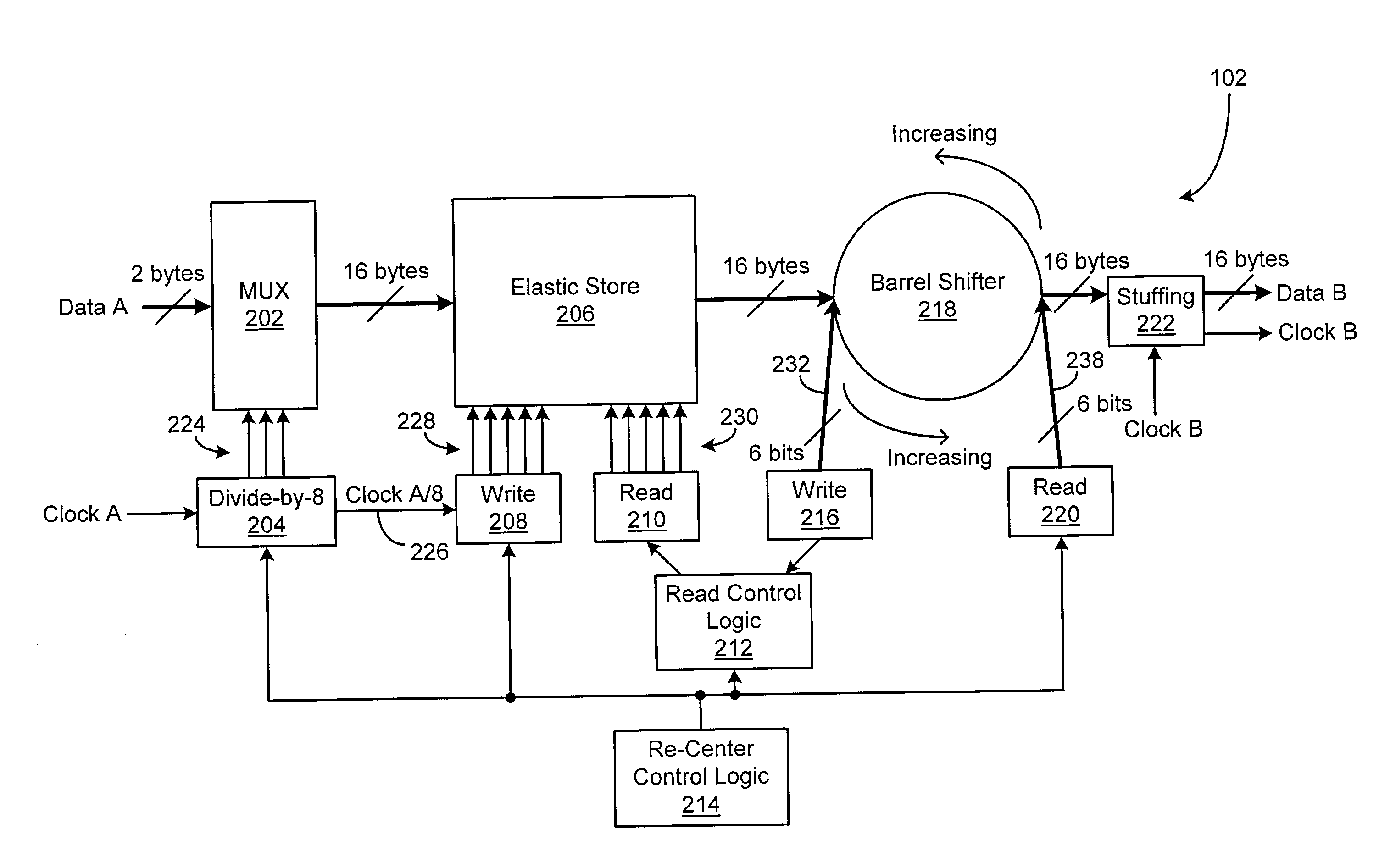Efficient asynchronous stuffing insertion and destuffing removal circuit
- Summary
- Abstract
- Description
- Claims
- Application Information
AI Technical Summary
Benefits of technology
Problems solved by technology
Method used
Image
Examples
Embodiment Construction
[0021]A digital communications system is disclosed that has the capability of asynchronously mapping / de-mapping digital signals from one clock domain to another. In the presently disclosed system, the asynchronous mapping capability is provided by an asynchronous stuff bit insertion circuit, which includes an elastic store for temporary gross data frame storage and a barrel shifter for temporary fine data frame storage. Use of the elastic store in combination with the barrel shifter allows increased levels of integration in the asynchronous stuff bit insertion circuit. Further, the asynchronous de-mapping capability is provided by an asynchronous stuff bit removal circuit, which includes a frequency control path that allows mapping jitter levels in the system to be reduced.
[0022]FIG. 1 depicts an illustrative embodiment of a digital communications system 100, in accordance with the present invention. In the illustrated embodiment, the digital communications system 100 includes an as...
PUM
 Login to View More
Login to View More Abstract
Description
Claims
Application Information
 Login to View More
Login to View More - R&D
- Intellectual Property
- Life Sciences
- Materials
- Tech Scout
- Unparalleled Data Quality
- Higher Quality Content
- 60% Fewer Hallucinations
Browse by: Latest US Patents, China's latest patents, Technical Efficacy Thesaurus, Application Domain, Technology Topic, Popular Technical Reports.
© 2025 PatSnap. All rights reserved.Legal|Privacy policy|Modern Slavery Act Transparency Statement|Sitemap|About US| Contact US: help@patsnap.com



